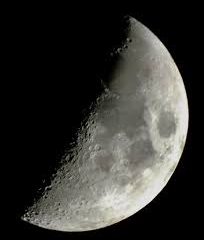Understanding the Significance of the Full Moon

Introduction
The full moon is a captivating astronomical event that has inspired awe and respect across cultures throughout history. Its luminous presence in the night sky has not only been a subject of scientific study but has also held great significance in various religious and cultural traditions. As a phenomenon that affects tides and influences numerous aspects of nature, understanding the full moon is essential for appreciating its impact on both human behaviour and the natural world.
What We Know About Full Moons
Occurring approximately once a month, a full moon signifies the lunar phase when the moon is fully illuminated by the sun as observed from Earth. This celestial event marks the end of the lunar cycle and has been tracked for centuries, serving as a guide for agriculture, fishing, and various seasonal activities. The next full moon will occur on October 29, 2023, and will be popularly referred to as the ‘Hunter’s Moon’, a term emanating from traditional hunting practices in North America.
Cultural Significance
Throughout history, the full moon has held immense significance in various cultures. Many ancient civilisations, including the Greeks, Romans, and Egyptians, revered the full moon and associated it with deities and fertility. Certain cultures believe that the full moon affects human behaviour, leading to terms like “lunacy” derived from the Latin word for moon, ‘luna’. Full moon celebrations and rituals still take place around the world, such as the Hindu festival of Kartik Purnima, celebrated with night-time festivities and lamp-lighting.
Impact on Nature
The full moon plays a critical role in the natural environment, particularly in influencing ocean tides. The gravitational pull from the moon can cause higher than normal tides, known as spring tides, impacting coastal ecosystems and marine wildlife. During full moons, many species exhibit notable behaviours, such as spawning in fish and increased nocturnal activity in various animals, demonstrating the significant link between the lunar cycle and nature.
Conclusion
The full moon is more than just a beautiful sight; it serves as a reminder of our connection to the universe and its rhythms. As we approach each full moon, it presents an opportunity for reflection, spiritual connection, and a deeper appreciation of our planet’s cycles. As interest in lunar phenomena continues to grow, particularly in the context of astrology and spirituality, the significance of the full moon remains as relevant today as it was in ancient times, inviting individuals to engage with the natural world and their own inner selves.








